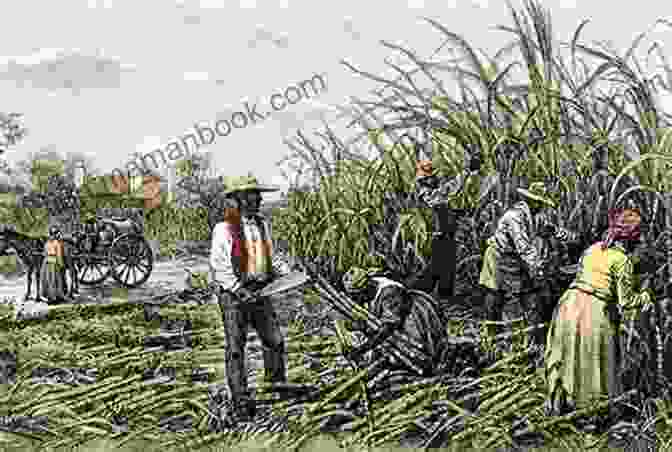Race, Slavery, and the Troubled History of America's Universities


The history of race and slavery in the United States is a complex and troubled one. This is reflected in the history of America's universities, which have long been complicit in the perpetuation of racial inequality.
4.6 out of 5
| Language | : | English |
| File size | : | 6988 KB |
| Text-to-Speech | : | Enabled |
| Enhanced typesetting | : | Enabled |
| X-Ray | : | Enabled |
| Word Wise | : | Enabled |
| Print length | : | 433 pages |
| Lending | : | Enabled |
| Screen Reader | : | Supported |
The first universities in the United States were founded in the 17th and 18th centuries, during a time when slavery was legal in all of the colonies. Many of these institutions were founded with the explicit purpose of educating the sons of wealthy plantation owners.
The curriculum at these universities was often heavily influenced by the racist ideology of the time. Students were taught that black people were inferior to white people and that slavery was a necessary institution for maintaining social order.
This racist ideology continued to permeate American universities throughout the 19th century. Even after the abolition of slavery in 1865, many universities continued to exclude black students or relegate them to segregated facilities.
In the 20th century, the civil rights movement led to some progress in terms of racial equality at universities. However, many of these institutions still struggled to fully integrate their student bodies and faculty.
Today, the legacy of race and slavery continues to cast a shadow over America's universities. Many institutions are still grappling with the ways in which their past involvement in slavery and racism has shaped their present-day policies and practices.
In recent years, there has been a growing movement on college campuses to confront the history of race and slavery. Students and faculty have organized protests, demanded changes to university curricula, and called for reparations for the harm that was done to black people by universities.
These efforts have led to some progress. Many universities have now established programs to study the history of race and slavery, and some have even issued formal apologies for their past involvement in these practices.
However, there is still much work to be done. The legacy of race and slavery continues to shape the experiences of black students and faculty at universities today. These institutions must continue to confront their past and work to create a more just and equitable future.
The Founding of America's Universities
The first universities in the United States were founded in the 17th and 18th centuries by religious denominations, such as the Puritans and the Anglicans.
These institutions were primarily intended to educate the sons of wealthy plantation owners and other elites. The curriculum was heavily focused on the classics, philosophy, and theology.
From the very beginning, American universities were complicit in the perpetuation of racial inequality. Many of the founders of these institutions were slave owners, and they often used their wealth and influence to ensure that their universities would continue to support the institution of slavery.
For example, the College of William and Mary in Virginia was founded in 1693 by a group of wealthy plantation owners who included several slave owners. The college's charter explicitly stated that black people were not allowed to attend the institution.
Other universities followed suit. By the end of the 18th century, most of the major universities in the United States were either explicitly or de facto segregated.
The Rise of Scientific Racism
In the 19th century, the rise of scientific racism provided a new justification for the enslavement of black people. Scientists and scholars argued that black people were inferior to white people in terms of intelligence, morality, and physical ability.
This racist ideology was widely disseminated through university curricula. Students were taught that black people were naturally suited for slavery and that they were incapable of achieving the same level of success as white people.
The rise of scientific racism had a devastating impact on the lives of black people in the United States. It provided a justification for the continued enslavement of black people and for the discrimination they faced in all aspects of life, including education.
The Civil War and Reconstruction
The Civil War (1861-1865) was fought over the issue of slavery. The Union victory in the war led to the abolition of slavery and the passage of the 13th, 14th, and 15th Amendments to the Constitution, which guaranteed black people's civil rights.
After the war, many universities in the South were forced to integrate their student bodies. However, many of these institutions resisted integration and continued to discriminate against black students.
In the North, many universities were more welcoming to black students. However, even these institutions often struggled to provide black students with a truly equal education.
The period of Reconstruction (1865-1877) was a time of great progress for black education. However, this progress was short-lived. In the late 1870s, the federal government began to withdraw its support for black education, and many Southern states passed laws that segregated schools and other public facilities.
The Era of Segregation
The era of segregation lasted from the late 19th century to the mid-20th century. During this time, black people were forced to live in segregated neighborhoods, attend segregated schools, and use segregated public facilities
Universities were no exception to this rule. Most universities in the South were segregated, and even those in the North often had quotas on the number of black students they would admit.
The era of segregation was a time of great hardship for black students. They faced discrimination and harassment on a daily basis, and they often had to attend inferior schools with fewer resources than white students.
The Civil Rights Movement
The civil rights movement of the 1950s and 1960s led to major changes in the United States, including the desegregation of schools and other public facilities. Universities were also affected by the civil rights movement, and many institutions began to admit more black students and faculty.
However, the legacy of segregation continued to haunt universities. Many institutions struggled to provide black students with a truly equal education, and black faculty members often faced discrimination and harassment.
The Present Day
Today, the legacy of race and slavery continues to shape the experiences of black students and faculty at universities. Many institutions are still grappling with the ways in which their past involvement in slavery and racism has shaped their present-day policies and practices.
In recent years, there has been a growing movement on college campuses to confront the history of race and slavery. Students and faculty have organized protests, demanded changes to university curricula, and called for reparations for the harm that was done to black people by universities.
These efforts have led to some progress. Many universities have now established programs to study the history of race and slavery, and some have even issued formal apologies for their past involvement in these practices.
However, there is still much work to be done. The legacy of race and slavery continues to shape the experiences of black students and faculty at universities today. These institutions must continue to confront their past and work to create a more just and equitable future.
The history of race and slavery in the United States is a complex and troubled one. This history is reflected in the history of America's universities, which have long been complicit in the perpetuation of racial inequality.
Today, the legacy of race and slavery continues to shape the experiences of black students and faculty at universities. These institutions must continue to confront their past and work to create a more just and equitable future.
4.6 out of 5
| Language | : | English |
| File size | : | 6988 KB |
| Text-to-Speech | : | Enabled |
| Enhanced typesetting | : | Enabled |
| X-Ray | : | Enabled |
| Word Wise | : | Enabled |
| Print length | : | 433 pages |
| Lending | : | Enabled |
| Screen Reader | : | Supported |
Do you want to contribute by writing guest posts on this blog?
Please contact us and send us a resume of previous articles that you have written.
 Top Book
Top Book Novel
Novel Fiction
Fiction Nonfiction
Nonfiction Literature
Literature Paperback
Paperback Hardcover
Hardcover E-book
E-book Audiobook
Audiobook Bestseller
Bestseller Classic
Classic Mystery
Mystery Thriller
Thriller Romance
Romance Fantasy
Fantasy Science Fiction
Science Fiction Biography
Biography Memoir
Memoir Autobiography
Autobiography Poetry
Poetry Drama
Drama Historical Fiction
Historical Fiction Self-help
Self-help Young Adult
Young Adult Childrens Books
Childrens Books Graphic Novel
Graphic Novel Anthology
Anthology Series
Series Encyclopedia
Encyclopedia Reference
Reference Guidebook
Guidebook Textbook
Textbook Workbook
Workbook Journal
Journal Diary
Diary Manuscript
Manuscript Folio
Folio Pulp Fiction
Pulp Fiction Short Stories
Short Stories Fairy Tales
Fairy Tales Fables
Fables Mythology
Mythology Philosophy
Philosophy Religion
Religion Spirituality
Spirituality Essays
Essays Critique
Critique Commentary
Commentary Glossary
Glossary Bibliography
Bibliography Index
Index Table of Contents
Table of Contents Preface
Preface Introduction
Introduction Foreword
Foreword Afterword
Afterword Appendices
Appendices Annotations
Annotations Footnotes
Footnotes Epilogue
Epilogue Prologue
Prologue Lee Vaughan
Lee Vaughan Thomas Herold
Thomas Herold Kerry Lonsdale
Kerry Lonsdale Elaine N Aron
Elaine N Aron Gerhard Kofler
Gerhard Kofler Winston Groom
Winston Groom Bill O Reilly
Bill O Reilly Deborah Brown
Deborah Brown Carlos Eton
Carlos Eton Terry Collins
Terry Collins Daniel Coyle
Daniel Coyle Cadfolks
Cadfolks Stephen Hill
Stephen Hill Margaret Mehl
Margaret Mehl Sara Bourgeois
Sara Bourgeois Sherri Neal
Sherri Neal Bryce Walton
Bryce Walton Elle Ingalls
Elle Ingalls Ken Little
Ken Little Shelley Tougas
Shelley Tougas
Light bulbAdvertise smarter! Our strategic ad space ensures maximum exposure. Reserve your spot today!

 Dawson ReedRoosevelt, Lindbergh, and America's Fight Over World War II, 1939-1941: The...
Dawson ReedRoosevelt, Lindbergh, and America's Fight Over World War II, 1939-1941: The... Brandon CoxFollow ·5.1k
Brandon CoxFollow ·5.1k Harry HayesFollow ·17k
Harry HayesFollow ·17k Cortez ReedFollow ·8.5k
Cortez ReedFollow ·8.5k Andy HayesFollow ·4.4k
Andy HayesFollow ·4.4k Jessie CoxFollow ·14k
Jessie CoxFollow ·14k Allen ParkerFollow ·13.4k
Allen ParkerFollow ·13.4k Sidney CoxFollow ·16.5k
Sidney CoxFollow ·16.5k Phil FosterFollow ·18.2k
Phil FosterFollow ·18.2k

 Abe Mitchell
Abe MitchellWhy Unleashing the Instinct to Play Will Make Our...
Play is an essential part of childhood. It is...

 Rubén Darío
Rubén DaríoTheory in Health Promotion Research and Practice
Theory is essential...

 Howard Blair
Howard BlairFailing Students or Failing Schools: Uncovering the Root...
In the United States, the issue of failing...

 Ira Cox
Ira CoxPoetry From the Heart Chope: A Symphony of Soul and Verse
Embark on a literary...

 Easton Powell
Easton PowellThe Witch Hunt: Wicked Witches of Shadow Woods
In the cursed woods of...
4.6 out of 5
| Language | : | English |
| File size | : | 6988 KB |
| Text-to-Speech | : | Enabled |
| Enhanced typesetting | : | Enabled |
| X-Ray | : | Enabled |
| Word Wise | : | Enabled |
| Print length | : | 433 pages |
| Lending | : | Enabled |
| Screen Reader | : | Supported |












